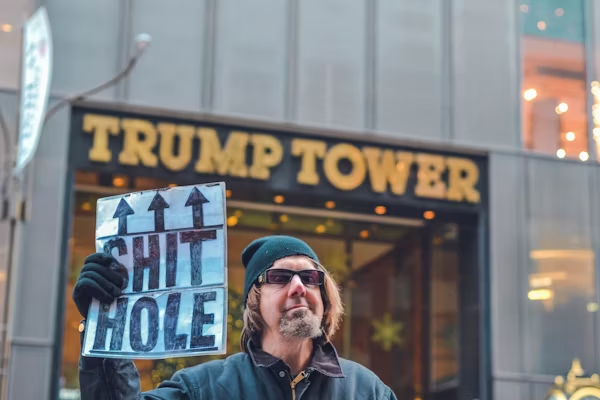On April 19, thousands of protesters took to the streets across the United States to voice their opposition to President Donald Trump’s recent policies. The date holds historical significance, marking the 250th anniversary of the American Revolutionary War’s start. Organizers chose this day to amplify the symbolic importance of the protests, which were part of the coordinated “50501” movement—aimed at holding demonstrations in all 50 states under one unified message.
Protests Center Around Deportation and Government Policy
Protesters gathered in various locations, including outside the White House, Tesla stores, and in downtown city centers. A central theme of the protests was the demand for the return of Kilmar Ábrego García, who was mistakenly deported to El Salvador despite having legal protections. This case sparked outrage among demonstrators, who condemned the actions of the Department of Government Efficiency (Doge), which has enacted job cuts and budget reductions across federal agencies. Many felt that the administration’s failure to ensure García’s repatriation was a critical issue.
Gihad Elgendy, speaking near the White House, condemned the deportation and called for immediate diplomatic intervention from President Trump. He stressed that the administration could compel El Salvador to repatriate García but lacked the political will to do so. Signs bearing the message “No Kings” were prominently displayed, a reference to the anti-monarchist sentiment of 1775 and a critique of Trump’s leadership style.
Public Sentiment Reflects Growing Discontent
Despite the widespread protests, a recent Gallup poll showed Trump’s approval rating at 45%, higher than the 41% approval rating he had at the beginning of his previous term. However, this figure remains below the 60% average first-quarter approval rating held by past U.S. presidents between 1952 and 2020. Additionally, a Reuters/Ipsos survey revealed a decline in public support for Trump’s economic policies, with only 37% of Americans expressing approval, down from 42% at his inauguration. These figures suggest a growing discontent, particularly regarding the president’s economic performance.
Lessons from History Inspire Protesters in Boston
In Boston, where the anniversary of the Lexington and Concord battles, as well as Paul Revere’s famous ride, was commemorated, protesters participated in the “50501” movement. Thomas Bassford, who attended the protest with his daughter and grandsons, said he hoped his grandsons would understand that freedom requires constant vigilance. “This is a very perilous time in America for liberty,” he stated, emphasizing the importance of civic engagement during such a critical time.
While the protests were largely peaceful, there were some confrontational moments. Democratic Representative Suhas Subramanyam posted a video showing a man with a Trump sign aggressively confronting the crowd during one of the demonstrations.
Earlier Protests Highlight Growing National Discontent
Earlier in April, a nationwide protest drew hundreds of thousands of people, becoming the largest national demonstration since Trump’s return to office. This earlier protest, which spanned 1,200 locations across the United States, surpassed even the scale and intensity of the April 19 demonstrations, reflecting a growing trend of nationwide discontent with the Trump administration.
The April 19 protests served as a powerful reminder of the public’s growing dissatisfaction with President Trump’s policies, especially on issues like deportation and government efficiency. While the protests were generally peaceful, they highlighted a broader movement that continues to gain momentum across the country. The protests, which coincided with a historic anniversary, also drew attention to the importance of civic engagement and the need for vigilance to protect liberty. With public sentiment continuing to shift, the coming months may see even larger and more intense demonstrations.


